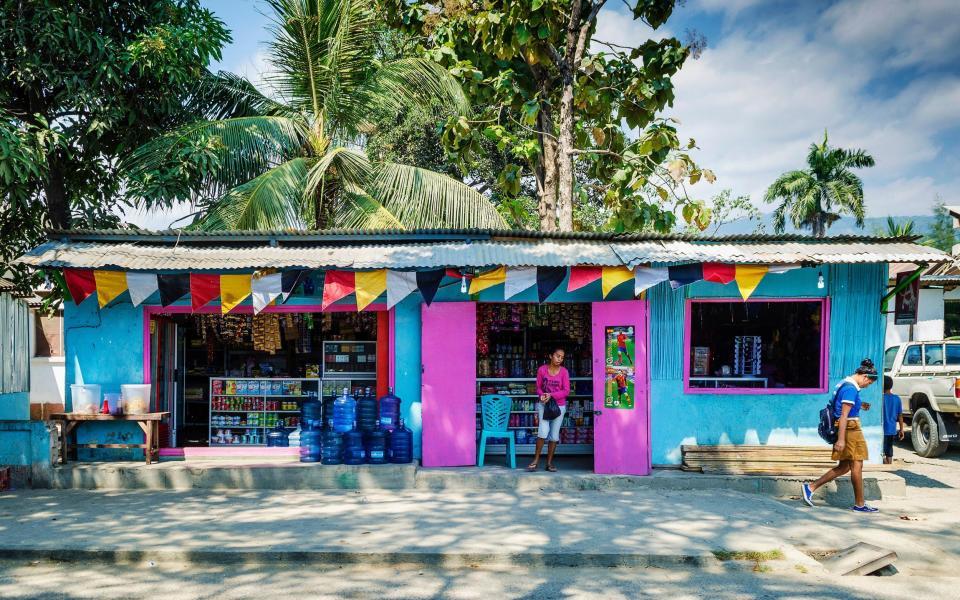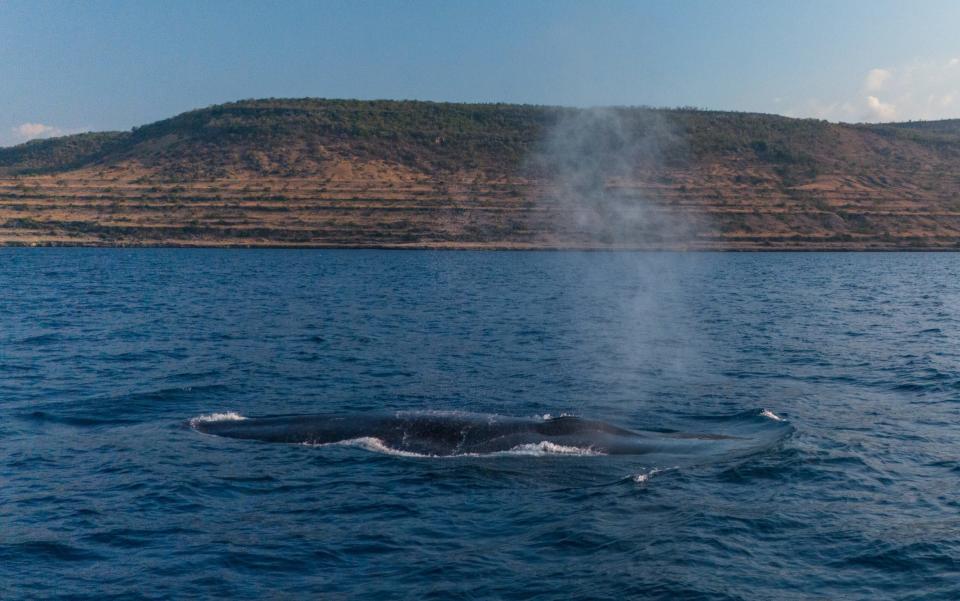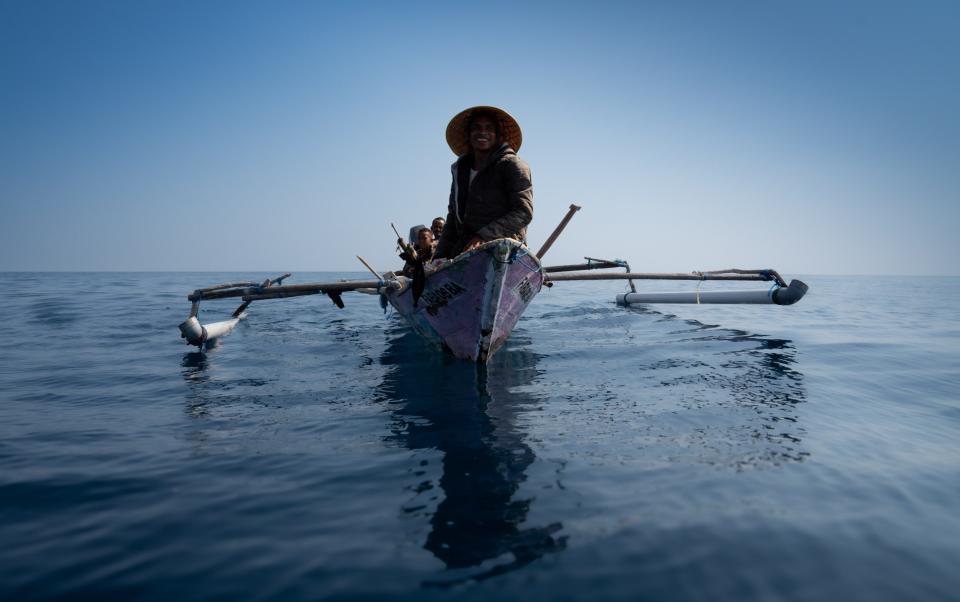When I looked out from Wata Bo’o beach, I saw a calm blue sea, the water not rippling, only occasionally disturbed by the splash of a leaping silver fish. This tranquil tropical outpost a thousand miles east of Bali felt like it had always been this way. Except the beach has a troubled history. The Portuguese, the Dutch, the Japanese and more recently the Indonesians have fought over it. With mass atrocities in living memory (they only gained independence from Indonesia 21 years ago) the focus here is on survival and rebuilding the country rather than attracting tourists. Up to the present? Very few people come.
But this may be about to change. News has spread that the northern coast of the Democratic Republic of Timor-Leste, formerly East Timor, could be one of the world’s largest ocean destinations and part of the marine migration highway with blue whales, sperm whales, fin whales, orcas, pilot whales. whales, false killer whales, whale sharks, melon-headed whales, oceanic manta rays and more. Can this largely forgotten new nation, essentially half of an island (the other half of Timor belongs to Indonesia) hold all this?
I landed in the sleepy, dusty capital, Dili, which is more of a seaside town than a bustling port. Dili is the only place in the country with adequate infrastructure; Elsewhere, facilities are limited, public transport unreliable and accommodation scarce. It resembles ancient Southeast Asia, where cultural traditions persist in villages and beaches are empty, sometimes surrealistically, such as Dollar Beach, once a popular spot for aid workers and now dotted with abandoned swimming pools and a fountain on the beach. in flip-flop shape.
I drove east for several hours across rugged rocky terrain where steep coastal mountains tumble into the sea, surrounded by beaches and reefs. There was very little traffic. Occasional roadside vendors sold fuel, ripe papayas and green coconuts in small plastic bottles. The children waved as they still do here.


I was heading to Baucau, the second town in the shadow of Matebian, the Mountain of the Holy Spirits and a long-time stronghold of resistance fighters. There were apparently only two hotels in Baucau, which had a dilapidated colonial feel; One doesn’t take reservations, the other isn’t open yet but is willing to accommodate me. It was thought that the country might have difficulty keeping up with the increase in the number of visitors, at least in the short term.
Turns out I wasn’t the only one checking out the rumors about marine life here. Additionally, some of the world’s best underwater photographers and filmmakers, whose work has appeared on the BBC, Netflix and National Geographic, were also renting rooms under the weight of long-lens cameras, drones and hydrophones. It felt like we were onto something.
Next to me was Bafta-winning videographer Patrick Dykstra, who regularly scouts whale destinations for tour operator Natural World Safaris between takes. He said until recently the best place to swim with blue whales was Sri Lanka, but now they have not been seen for four or five years.


“Some attribute their extinction to climate change and its impact on currents and sea temperatures,” he said. “But it was also an unregulated industry with a lot of boats and some operators actually abusing the animals.”
On our first day, we took a winding path towards the beach, made our way to the boat at low tide, and then set off into a sea that was almost as deep blue as navy blue. There was not another boat or fisherman in sight; It was as if the ocean was left to us. Luckily, we spotted a pod of 40 pilot whales within minutes of leaving shore. We passed the boat in front of them and I slid down the back ladder into the water. Suspended below the waterline, immersed in this other world, I must admit I could barely catch the blur of whales whizzing by.
We set off at first light the next day. For hours we scanned the expanse of the ocean for tail flutter or pulse, listening for clicks and whistles through a hydrophone. The ocean can play tricks on you, throw you off balance, confuse you with its lack of landmarks and endless sameness. I didn’t see anything move. Maybe a flying fish, maybe a fin, maybe both.
Back at the private hotel, I spoke with underwater photographer Shawn Heinrichs, who had been here for a few weeks. “It’s a game of patience and determination,” he consoled me. “The exciting part is that you have the possibility of emerging the largest animals to ever grace the planet. East Timor has a truly unique maritime corridor. “To find all these species in one place is unprecedented.”
Credit some of the most powerful movements of water on the planet, a current that connects the Indian and Pacific Oceans in a zig-zag pattern across the archipelagos of Indonesia and the Philippines. Amazingly, 80 percent of this water is rushing north past Timor. The sea is quite deep just off the coast, a few kilometers down; Underwater rocky shelves create upwellings and push nutrients upward, leading to feeding and migration bottlenecks.


These couldn’t be more perfect conditions for marine mammals and pelagic creatures, as well as anyone who wants to swim with them. On my third and final day, we saw a pod of 100 false killer whales, including a lone bottlenose dolphin. Although we tried to catch up, they left us behind and the ocean waves were too rough for our little boat.
There are many variables in these types of trips, such as weather, climate change and the emergence of El Niño. Of course, there is also luck, and it depends on your perspective. I was lucky even if I missed the largest marine mammals. There were sperm whales a week before I arrived. A week later the blue whales arrived. It’s difficult to get the timing right when dealing with migratory species.
Marine ecologist Karen Edyvade, President of the Timor-Leste Marine Tourism Association, established a field station near Dili in collaboration with the National University of Timor-Leste and Charles Darwin University in Australia. “Ten years ago we knew almost nothing about what was happening in these tropical waters,” she said. “We now have great data sets, especially for blues and sperm.”


We spoke on the phone shortly after I left, and Karen’s crew had recorded 12 blue whale sightings that day and eight the day before. “This proves that the country can move towards ecotourism and away from an economy that depends almost entirely on oil revenues.”
One night, after a day at sea, I was offered the chance to interview the country’s President, José Ramos-Horta, who won the Nobel Peace Prize in the 1990s and survived an assassination attempt a dozen years later. your wife. I drove a few hours east to the town of Com and found him in the middle of dinner at a makeshift beach camp, wearing a Harley Davidson jacket, entertaining old friends who were exploring the country by caravan.
Ramos-Horta is a storyteller and joker; He told me about his first job managing a tourist kiosk at Baucau airport, about carbon credits, post-conflict reconciliation, fibre-optic cables, COP28 and how scared he was of sharks. But it got serious when we turned our attention to Timor’s oceans.
“I am 100 per cent ready to support the protection of our marine environment to prevent further damage,” he said, before adding resignedly: “But I have been talking to Australia and Indonesia about a common maritime security policy for years, and they have pursued that. Inevitably there are political differences, but the Timor Sea Do not ignore the oil and gas reserves in .


My boat driver, Ricardo Marquez, said that he and others had made some good choices to trust their country, leaving subsistence fishing and farming for tourism; They aim to become boat operators and open homestays and dining establishments. “But I’m worried the whales will leave,” he told me. “We have been talking about how to manage operations for a long time, but we still do not have a regulation.”
“What we need is training and accreditation,” echoed Karen Edyvade. “Right now anyone can jump on a boat and swim alongside a whale, there is no minimum distance required. Sri Lanka got it wrong. We can’t get it wrong.”
Meanwhile, the Caribbean island of Dominica is seen as a beacon of hope for sustainable marine tourism. Last month, the country declared a 300-square-mile marine protected area for sperm whales, a world first. Patrick Dykstra was instrumental in making this happen. “I hope Timor-Leste does something like this,” he said. “My hunch is that it’s possible.”
Fundamentals
Michelle Jana Chan traveled as a guest of Natural World Safaris (01273 691642; naturalworldsafaris.com), which offers a seven-night sea safari to East Timor for £6,200 per person, including accommodation, meals, most drinks, airport transfers. Dili Airport and six days of whale watching on a private boat with an expert marine guide.